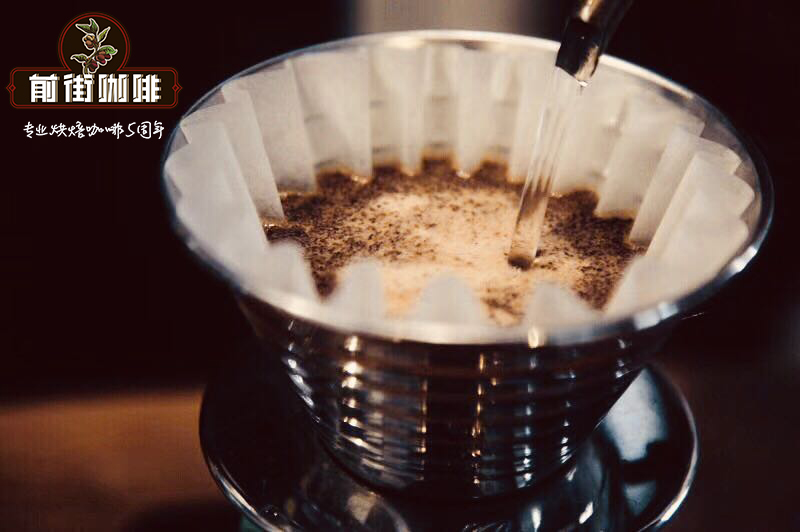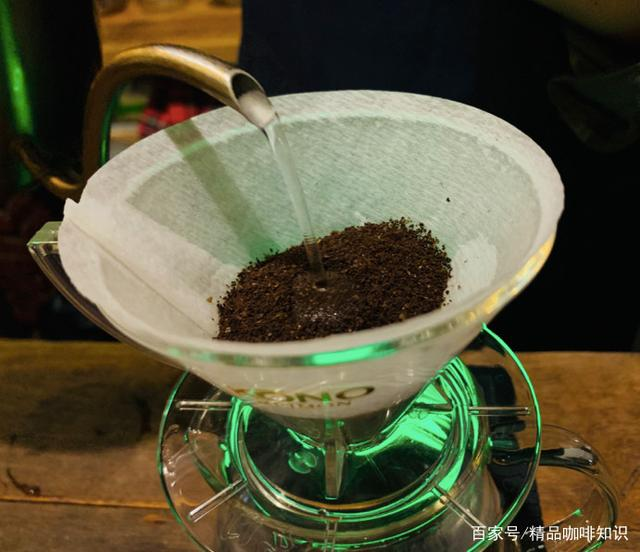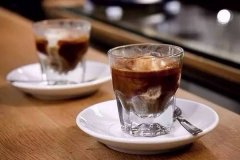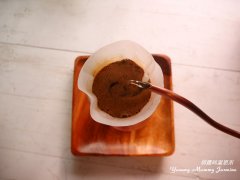Hand coffee master quick trick sharing-explanation of five techniques and four elements of hand coffee brewing

Professional coffee knowledge exchange more coffee bean information please follow the coffee workshop (Wechat official account cafe_style)
Qianjie said directly that it is easy to make a cup of coffee, but it is difficult to make a good cup of coffee. We all know that the brewing factors of a good cup of coffee involve many aspects, such as the freshness of beans, the temperature of the water, the thickness of grinding, the influence of hand brewing and so on. And interlinked, so it is not a joke, want to make a good cup of coffee, it is really not easy!
Seven factors affecting hand-brewed coffee
Coffee beans
High-quality coffee beans are the foundation of a good cup of coffee. Generally, the coffee beans used in hand-brewed coffee are single beans, that is, single-origin coffee beans, which can better reflect the unique flavor of the producing area. Good coffee beans are directly reflected in flavor, defect rate and baking freshness. Defective beans will directly affect the overall flavor of coffee, and it is best to choose freshly roasted coffee beans, generally the best taste period of coffee beans is 4-30 days.
Freshly roasted coffee usually takes 4-7 days to grow beans, after which the coffee flavor will be at its best, and then the flavor will slowly decrease.

Second, water temperature
The best water temperature of hand-brewed coffee is closely related to the roasting depth of coffee beans. Too high temperature and excessive extraction will bring out more bitterness in coffee beans, while too low temperature will lead to lack of sour aroma, so the most suitable temperature needs to be tried constantly. In general, lightly roasted coffee beans need to use a higher temperature to stimulate their aroma, 93 ℃-95 ℃ is more appropriate, while deep-roasted coffee beans need slightly lower water temperature to keep the aroma from being lost instantly, 85 ℃-88 ℃ is more appropriate.

Third, the degree of grinding
Good coffee must be matched with the right degree of grinding to give full play to its maximum flavor. The most common degree of grinding is compared with granulated sugar, which is indeed comparable. In general, the grindness particle value of hand-brewed coffee is 600-800 microns, which is similar to the thickness of granulated sugar. The finer the grinding, the larger the surface area of coffee in contact with water, the higher the extraction efficiency; the thicker the grinding, the smaller the surface area of coffee in contact with water, the lower the extraction efficiency.
It is recommended to choose the size of granulated sugar as a reference at the beginning, and then fine-tune the grinding degree after brewing and tasting. For example, if the coffee is light, you can fine-tune it slightly.

IV. Water quality
More than 98% of a cup of hand-brewed coffee is made up of water, so the water quality directly affects the quality of a cup of coffee. General basic requirements for water quality is TDS:150 mg / L, no chlorine, PH value of 7-8. It is recommended to use filtered purified water or mineral water (you can see the label of mineral water). Generally speaking, the lower the TDS value of water, the more substances it will dissolve.

5. Ratio of powder to water
The change of the ratio of coffee powder to water directly affects the concentration of coffee. At present, the most commonly used ratio of powder to water is 1:15. This is not an absolute, just a reference, personal taste is ever-changing, you can properly adjust your own taste. If you like the rich taste, you can choose 1 13; if you like light, you can adjust it to 1:16.
Water injection
According to different schools, there are many theories about the process of water injection, including those who complete the water injection at one time to let the coffee extract at one time, and some who let the coffee get different flavors in the early, middle and later stages. But what remains unchanged is to inject water evenly in a circle from the inside to the outside. The ratio of water to coffee powder is about 13:1 to 15:1. It is important to note that the water injection process can not let the water touch the filter paper wall, and it is necessary to evenly moisten all coffee powder in the circle process, which is the most experienced and technical link in hand-brewing coffee.

Time
The duration of brewing involves many factors, such as grinding degree, amount of powder, ratio of powder to water, characteristics of filter cup, technique, etc., so it is impossible to give an accurate time, but it usually takes about 1 minute, 30 seconds to 3 minutes to brew a cup of coffee (15-20g powder) (except for special brewing methods such as Japanese brewing).

Summary
The above parameters are inextricably linked and complement each other. The quality and water quality of coffee beans are the most important factors affecting the quality of a cup of coffee, while the degree of grinding, water temperature, water powder ratio, time and methods complement each other to find a balance among them (belong to their own). This is a cumulative process, and gradually, you will sum up a set of cooking methods of your own.
The techniques are roughly divided into five types: one-stage type, three-stage type, four-six method, drip rush, and volcanic thrust.
Important Notice :
前街咖啡 FrontStreet Coffee has moved to new addredd:
FrontStreet Coffee Address: 315,Donghua East Road,GuangZhou
Tel:020 38364473
- Prev

How does Starbucks decaf coffee taste? Decaf coffee is decaf.
Professional coffee knowledge exchange More coffee bean information Please pay attention to coffee workshop (Weixin Official Accounts cafe_style) The origin and development of decaf coffee: Why sell Swiss water treatment decaf coffee? Decaffeinated Starbucks Homemade Coffee Beans are a blend of the finest Latin American coffee beans using natural decaffeinated processing to create a stone fruit and cocoa-like taste body.
- Next

I'd like to have a good cup of coffee.-get started with hand-made coffee and share how to drink it.
Professional coffee knowledge exchange more coffee bean information Please follow the coffee workshop (Wechat official account cafe_style) the seven factors that affect hand-brewed coffee smell is strong mellow taste mellow and humble posture is elegant and sexy this is what I want to drink a good cup of hand-made coffee a good cup of hand-brewed coffee. It turns out it's not as simple as I thought. A good cup of hand coffee.
Related
- Beginners will see the "Coffee pull flower" guide!
- What is the difference between ice blog purified milk and ordinary milk coffee?
- Why is the Philippines the largest producer of crops in Liberia?
- For coffee extraction, should the fine powder be retained?
- How does extracted espresso fill pressed powder? How much strength does it take to press the powder?
- How to make jasmine cold extract coffee? Is the jasmine + latte good?
- Will this little toy really make the coffee taste better? How does Lily Drip affect coffee extraction?
- Will the action of slapping the filter cup also affect coffee extraction?
- What's the difference between powder-to-water ratio and powder-to-liquid ratio?
- What is the Ethiopian local species? What does it have to do with Heirloom native species?

